Module 4: Considering the Audience
Tailoring your speech to the audience, learning objectives.
Explain what it means to tailor a speech to the audience and the event.
You know that you have to give a presentation and you know there is an audience; what’s next? A bit of research is in order at this point. The more you know about who is listening, the better you will be able to connect your message with them.
Knowing about the audience and the event allows the speaker to tailor the speech for a particular speaking situation. Consider these two scenarios:
Scenario 1 : Janelle, who just completed a summer internship researching PTSD and substance abuse, is invited to present her work to a gathering of physicians. This presentation seems like a perfect opportunity to help medical professionals better understand this complex problem. She puts together a powerful presentation that uses stories from her research to illustrate the vicious circle of trauma and addiction and plans breakout groups in which the physicians would explore how their own work could be improved by a trauma-informed approach to medical care.

Janelle didn’t realize that she’d be speaking at a holiday luncheon.
When she arrives at the event, she discovers that she is one of four students being featured at the event as the recipients of “Rising Research Stars” scholarships. The event itself, she learns, is a holiday luncheon for a local physicians’ group. Even though the scholarship presentation is only a small part of the event, she is allowed to give her full presentation. The crowd seems engaged at first, but she can tell they are losing focus halfway through.
Afterwards, one of the organizers says, “that’s very impressive work you’re doing. Kind of a downer for a holiday party, though.” He laughs, but Janelle realizes he’s right: she gave the right presentation for the wrong crowd.
In a way, Janelle isn’t the only one at fault here: the organizers didn’t give her enough information to understand her role in the event. The mismatch between her presentation and the audience’s expectations could have been avoided, though, if she had asked a few questions about the nature of the event: What kind of gathering is it? Who will be there? What are they hoping to learn from me?

Knowing about your audience and the event can help to make a presentation successful.
Scenario 2: Jaden needs to train day care employees on changes in their health and safety procedures. Jaden knows that this topic is critical as the workers have to make sure that all the little ones get the best care. Jaden does his homework and asks the day care manager about the attendees—how many there will be along with some demographic information. Even better, Jaden visits the day care to observe the people who will attend.
This prior knowledge gives Jaden information on how to construct his presentation. He will know what type of people will attend, what the facility looks like in which he will speak, age, gender, number, and so on. When Jaden creates his training, he will keep this information in mind. He can tailor the language, examples, humor, and experience to the group. When Jaden conducts the training, the audience can tell that this training is just for them.
During the speech, Jaden can gauge the audience’s reaction. He can look for visual cues such as eye contact, body language, questions, and so on. He can tell if he is losing his audience if he sees someone dozing off in the back. He can tell if he is winning the audience by head shakes. Jaden will know from this feedback how engaged the audience is and can adjust his presentation based on what he observes.
The final step to knowing how the presentation went is asking for feedback on a survey. You have all experienced surveys given out at the end of speeches. The purpose is to help the speaker improve. Jaden will know from the surveys what his audience thought. He can then incorporate changes or keep some elements based upon what he learns. This is research into how everything went – thus, post feedback.
Tailoring a speech to one’s audience is the best way to get them to be invested in what you’re saying.
Watch out, though! If you tailor your speech too much to one segment of the audience, you risk losing the rest. If you speak just to the experts, your material could sail over the heads of beginners. If you speak only to those who agree with one side of an issue, those who hold the opposing view will dismiss your argument or get angry. Even if your entire audience might agree with your views on something, you should avoid telling them only what they want or expect to hear. This kind of one-sided presentation is called pandering or “preaching to the choir.”

To listen: Steve Martin, Plumbers Joke
Comedian Steve Martin plays with the idea of pandering to the audience on his 1977 standup album Let’s Get Small . After setting up the idea that a group of plumbers from a convention are at his show, he tells a joke just for the plumbers.
You can view the transcript for “plumbers joke steve martin” here (opens in new window) .
After a long wind-up, we get the punchline:
This infuriated the supervisor, so he went and got Volume 14 of the Kinsley manual. He reads to him, “The Langstrom 7-inch wrench can be used with the Findley sprocket.” Just then, the little apprentice leaned over and said, “It says sprocket, not socket!”
When the joke doesn’t bring down the house, Martin asks, “were those plumbers supposed to be here this show?”
- Teacher training. Authored by : Fabrice Florin. Located at : https://flic.kr/p/L9dqD5 . License : CC BY-SA: Attribution-ShareAlike
- plumbers joke steve martin. Authored by : Bury and Associates. Located at : https://youtu.be/yX27AfOEYGc . License : Other . License Terms : Standard YouTube License
- Tailoring Your Speech to the Audience. Authored by : Sandra K. Winn with Lumen Learning. License : CC BY: Attribution

- Product overview
- Sales Content Management
- Content Personalization
- Sales Presentations
- Content Sharing & Tracking
- Sales Content Analytics
- Smart Sales Tools
- Integrations
- Digital Sales Room
- For Marketers
- For Sales Teams & Dealers
- For Business Leaders
- Customer Success Stories
- Modern B2B Sales Blog
- Sales Enablement
- Help Center
- Sign in to Showell App
- Sign in to Showell Admin

Learn 8 Rules of Tailoring Your Presentations
Learning the 8 rules of tailoring your presentation, just like any other checklist and playbook, will help optimize your processes and day-to-day work. This guides us so that some tasks would require less cognitive effort.
Having to tailor your presentation for each sales meeting doesn’t have to be a difficult and time-consuming task. As long as you keep your focus on your buyer, ensuring their needs are at the forefront of your presentation, you’re guaranteed a meeting that resonates with your prospects every time.
Find out the 8 rules on how to tailor your presentation to your meet your buyer’s needs.
The story of an elephant and the blind men
A group of blind men ran into a strange animal, an elephant. None of them had met an elephant before. They were curious and said: “Let’s inspect and learn it by touch”. And so they did. The first blind man, whose hand landed on the trunk, said “This animal is like a thick snake”. The second one reached its leg and said, “the elephant is a pillar-like tree trunk”. The third blind man placed his hand on the elephant’s side and shouted, “this animal is like a huge wall”. The fourth touched the elephant’s tail and described it as a rope.
All of these blind men were right. Even though the elephant is neither a thick snake, tree trunk, wall, nor rope, each of their point of view was true. Their individual experiences were real and true even though the whole concept of an elephant was left unfinished.
Your customers are blind
In sales, as the concepts and solutions are getting more and more complex, your customers are like the blind men from the story when they are first introduced to your product or service. But unlike the blind men that were curious about the elephant, your customers couldn’t care less about knowing your product.
That’s why you need to be able to start with something familiar. The blind men might not know the concept of an elephant, but they knew what a snake, pillar, wall, or rope is– and has an idea about how those work and function. The same goes for your product. Essentially, your buyers may know the features and functionalities your product may offer, but it’s up to you to piece those together and create value.
The most important part of any presentation is the audience.
For any presentation, it’s key to understand your audience’s pain points and how your offering fits in the picture.
This – finding common ground and piecing the problem and solution together – is what tailoring is. It is rewriting your story to start off from where your customer is now – and then telling them, where your product can take them. This is why you should tailor your presentation.
Learn more about Unleashing the Power of Storytelling in Sales Presentations →
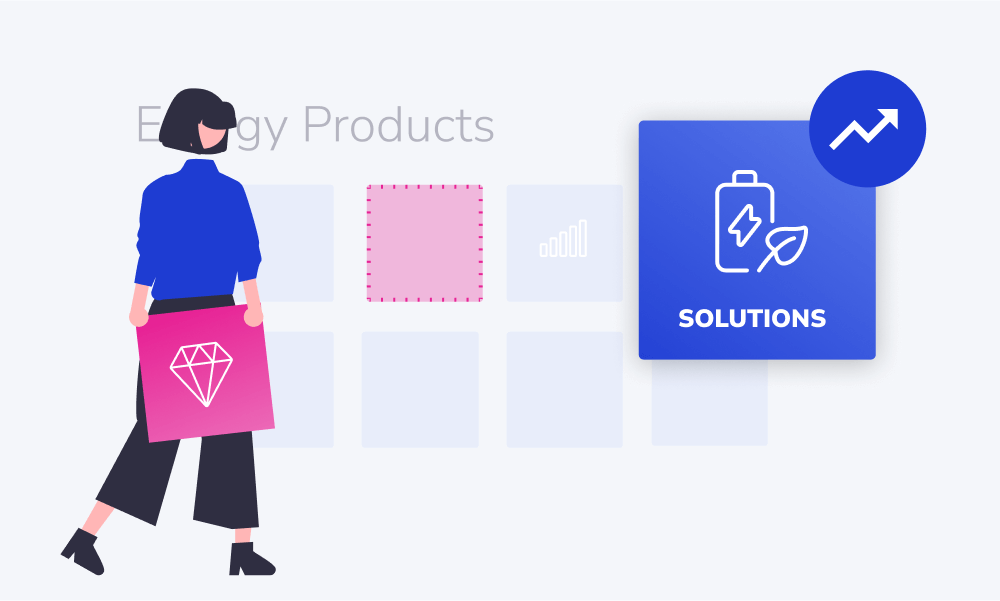
8 Rules of Tailoring Your Presentation
Remember, whether it was a face-to-face or a virtual meeting, the most important part of your presentation is understanding the needs of your audience. Consider everything you do to meet those needs.
1) Understand what your audience is looking for
What does this entail? This means asking questions to gain a better insight as to what brought them to you. Whether that’s getting to know their role or how they ended up finding your product or solution. By doing this, not only do you get to have a deep dive into what your prospect is looking for but also see any opportunities or potential where your offering can bring more value.
2) Focus on your opening
Your audience will make two decisions in the first few seconds of your presentation- will they like you and will they trust you? After those first few seconds, it can be difficult hard to change their impression. So, think carefully about how you start your presentations. Reflect and learn from your experiences. To do well in sales and to be able to build a long-lasting relationship with your buyers, you want people to like you and trust you.
Learn more about
- How to Begin Your Sales Presentation?
- 16 Effective Sales Meeting Icebreakers and Techniques →
3) Prepare to answer any questions that might arise
This is something that you can learn from experience but it also is something that your colleagues can help you with. Remember sales is teamwork. Statistically, if you are able to cover 5 of the most commonly asked questions, you are already very well prepared.
Learn more about 7 Key Elements of How to Prepare for a Successful Sales Call →
4) Prepare to change your topic on the go
No matter how well you have studied your buyers' expectations for your presentation, surprises are possible and eventual. That’s why you need to be prepared for any objections. Sometimes instead of a trunk, your audience needs a wall. And remember – you don’t need to change the whole concept, just the common ground.
A good presentation has the facts delivered to the audience that touches an emotional aspect or aims to bring out an emotional reaction.
5) Make sure your presentation is visual, smart, and appealing
From the times of Aristotle, all persuasive communication has aimed to speak to the mind and to the heart. A good presentation has the facts delivered to the audience that touches an emotional aspect or aims to bring out an emotional reaction. Don’t be corny, though. Creating a great presentation isn’t easy and it’s a good idea to ask for help and feedback in doing this. Sales is teamwork.
Learn more about How to Use Videos in Sales: 3 Highly Effective Tactics →
6) Meeting is a two-way interaction; remember to ask questions
When you go on a date, a monologue is never sexy. The communication in your sales meetings is no different. Remember, the most important part of your presentation is your audience. Ask if they’re doing fine if they understand what you’re trying to explain, and if they find your points relevant. Think of good questions beforehand, it is your responsibility to help your buyers feel comfortable, heard, and understood.
7) Use humor, but don’t be an idiot
Humor is difficult. Jokes and business meetings are generally a bad match. People tend to like positive people in positive surroundings, so if you can bring humor about a minor situation, the weather, or even about yourself to be seen more positively – give it a shot. Never slip out an offensive joke – it makes you look like an idiot.
Always remember that no matter your role in your organization, you are an extension of your brand.
8) Know your brand inside and out and treat it with respect
Always remember that no matter your role in your organization, you are an extension of your brand. It’s not just you that is meeting with the customer. You represent your company – the past, present, and future of it. You represent all the people that have worked hard to get your company to where it is at this point. So make sure you align with your brand guidelines and values whenever you meet with a prospect. Do good for your company’s brand in every meeting – you owe it to the ones who are carrying you on their shoulders.
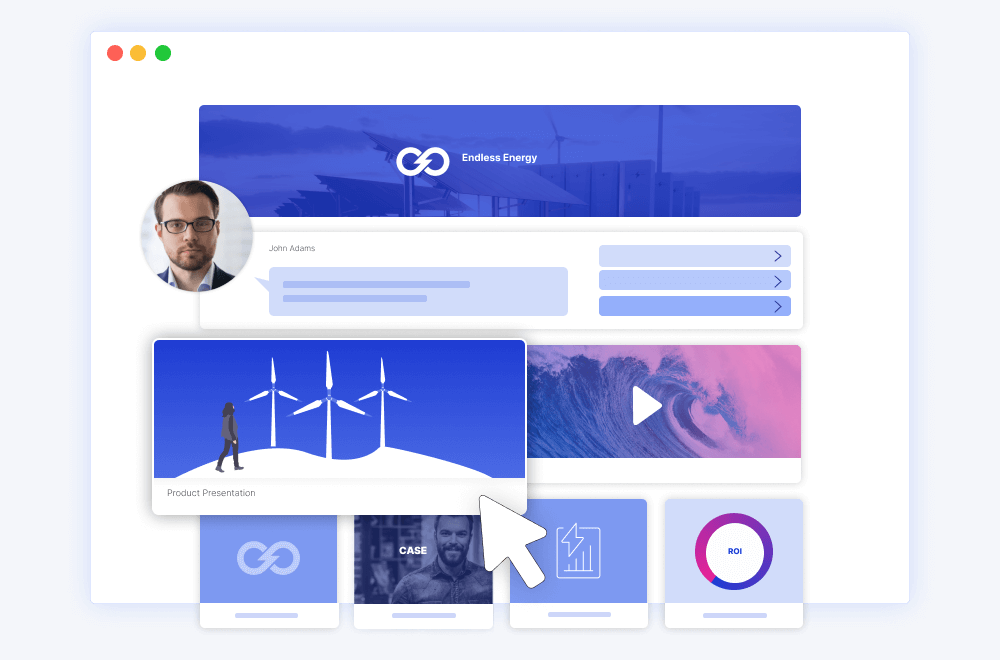
All in all...
Tailoring your sales presentations to meet the needs of your audience can make all the difference in closing deals. Remember, your customers may be blind to your product or service at first, but by following these eight rules of tailoring your presentation, not only are you optimizing your process but most importantly, you can help your buyers see the value in what you're offering.
Learn next:
- How To Interpret and Overcome Sales Resistance in Sales Conversations →
- 5 Essential Elements of a Winning Sales Proposal in B2B Sales →
- Asking for the Sale: 7 Key Questions and Phrases for Successful Non-Pushy B2B Selling →

Related content
We use essential cookies to make Venngage work. By clicking “Accept All Cookies”, you agree to the storing of cookies on your device to enhance site navigation, analyze site usage, and assist in our marketing efforts.
Manage Cookies
Cookies and similar technologies collect certain information about how you’re using our website. Some of them are essential, and without them you wouldn’t be able to use Venngage. But others are optional, and you get to choose whether we use them or not.
Strictly Necessary Cookies
These cookies are always on, as they’re essential for making Venngage work, and making it safe. Without these cookies, services you’ve asked for can’t be provided.
Show cookie providers
- Google Login
Functionality Cookies
These cookies help us provide enhanced functionality and personalisation, and remember your settings. They may be set by us or by third party providers.
Performance Cookies
These cookies help us analyze how many people are using Venngage, where they come from and how they're using it. If you opt out of these cookies, we can’t get feedback to make Venngage better for you and all our users.
- Google Analytics
Targeting Cookies
These cookies are set by our advertising partners to track your activity and show you relevant Venngage ads on other sites as you browse the internet.
- Google Tag Manager
- Infographics
- Daily Infographics
- Template Lists
- Graphic Design
- Graphs and Charts
- Data Visualization
- Human Resources
- Beginner Guides
Blog Beginner Guides
How To Make a Good Presentation [A Complete Guide]
By Krystle Wong , Jul 20, 2023

A top-notch presentation possesses the power to drive action. From winning stakeholders over and conveying a powerful message to securing funding — your secret weapon lies within the realm of creating an effective presentation .
Being an excellent presenter isn’t confined to the boardroom. Whether you’re delivering a presentation at work, pursuing an academic career, involved in a non-profit organization or even a student, nailing the presentation game is a game-changer.
In this article, I’ll cover the top qualities of compelling presentations and walk you through a step-by-step guide on how to give a good presentation. Here’s a little tip to kick things off: for a headstart, check out Venngage’s collection of free presentation templates . They are fully customizable, and the best part is you don’t need professional design skills to make them shine!
These valuable presentation tips cater to individuals from diverse professional backgrounds, encompassing business professionals, sales and marketing teams, educators, trainers, students, researchers, non-profit organizations, public speakers and presenters.
No matter your field or role, these tips for presenting will equip you with the skills to deliver effective presentations that leave a lasting impression on any audience.
Click to jump ahead:
What are the 10 qualities of a good presentation?
Step-by-step guide on how to prepare an effective presentation, 9 effective techniques to deliver a memorable presentation, faqs on making a good presentation, how to create a presentation with venngage in 5 steps.
When it comes to giving an engaging presentation that leaves a lasting impression, it’s not just about the content — it’s also about how you deliver it. Wondering what makes a good presentation? Well, the best presentations I’ve seen consistently exhibit these 10 qualities:
1. Clear structure
No one likes to get lost in a maze of information. Organize your thoughts into a logical flow, complete with an introduction, main points and a solid conclusion. A structured presentation helps your audience follow along effortlessly, leaving them with a sense of satisfaction at the end.
Regardless of your presentation style , a quality presentation starts with a clear roadmap. Browse through Venngage’s template library and select a presentation template that aligns with your content and presentation goals. Here’s a good presentation example template with a logical layout that includes sections for the introduction, main points, supporting information and a conclusion:

2. Engaging opening
Hook your audience right from the start with an attention-grabbing statement, a fascinating question or maybe even a captivating anecdote. Set the stage for a killer presentation!
The opening moments of your presentation hold immense power – check out these 15 ways to start a presentation to set the stage and captivate your audience.
3. Relevant content
Make sure your content aligns with their interests and needs. Your audience is there for a reason, and that’s to get valuable insights. Avoid fluff and get straight to the point, your audience will be genuinely excited.
4. Effective visual aids
Picture this: a slide with walls of text and tiny charts, yawn! Visual aids should be just that—aiding your presentation. Opt for clear and visually appealing slides, engaging images and informative charts that add value and help reinforce your message.
With Venngage, visualizing data takes no effort at all. You can import data from CSV or Google Sheets seamlessly and create stunning charts, graphs and icon stories effortlessly to showcase your data in a captivating and impactful way.

5. Clear and concise communication
Keep your language simple, and avoid jargon or complicated terms. Communicate your ideas clearly, so your audience can easily grasp and retain the information being conveyed. This can prevent confusion and enhance the overall effectiveness of the message.
6. Engaging delivery
Spice up your presentation with a sprinkle of enthusiasm! Maintain eye contact, use expressive gestures and vary your tone of voice to keep your audience glued to the edge of their seats. A touch of charisma goes a long way!
7. Interaction and audience engagement
Turn your presentation into an interactive experience — encourage questions, foster discussions and maybe even throw in a fun activity. Engaged audiences are more likely to remember and embrace your message.
Transform your slides into an interactive presentation with Venngage’s dynamic features like pop-ups, clickable icons and animated elements. Engage your audience with interactive content that lets them explore and interact with your presentation for a truly immersive experience.

8. Effective storytelling
Who doesn’t love a good story? Weaving relevant anecdotes, case studies or even a personal story into your presentation can captivate your audience and create a lasting impact. Stories build connections and make your message memorable.
A great presentation background is also essential as it sets the tone, creates visual interest and reinforces your message. Enhance the overall aesthetics of your presentation with these 15 presentation background examples and captivate your audience’s attention.
9. Well-timed pacing
Pace your presentation thoughtfully with well-designed presentation slides, neither rushing through nor dragging it out. Respect your audience’s time and ensure you cover all the essential points without losing their interest.
10. Strong conclusion
Last impressions linger! Summarize your main points and leave your audience with a clear takeaway. End your presentation with a bang , a call to action or an inspiring thought that resonates long after the conclusion.
In-person presentations aside, acing a virtual presentation is of paramount importance in today’s digital world. Check out this guide to learn how you can adapt your in-person presentations into virtual presentations .

Preparing an effective presentation starts with laying a strong foundation that goes beyond just creating slides and notes. One of the quickest and best ways to make a presentation would be with the help of a good presentation software .
Otherwise, let me walk you to how to prepare for a presentation step by step and unlock the secrets of crafting a professional presentation that sets you apart.
1. Understand the audience and their needs
Before you dive into preparing your masterpiece, take a moment to get to know your target audience. Tailor your presentation to meet their needs and expectations , and you’ll have them hooked from the start!
2. Conduct thorough research on the topic
Time to hit the books (or the internet)! Don’t skimp on the research with your presentation materials — dive deep into the subject matter and gather valuable insights . The more you know, the more confident you’ll feel in delivering your presentation.
3. Organize the content with a clear structure
No one wants to stumble through a chaotic mess of information. Outline your presentation with a clear and logical flow. Start with a captivating introduction, follow up with main points that build on each other and wrap it up with a powerful conclusion that leaves a lasting impression.
Delivering an effective business presentation hinges on captivating your audience, and Venngage’s professionally designed business presentation templates are tailor-made for this purpose. With thoughtfully structured layouts, these templates enhance your message’s clarity and coherence, ensuring a memorable and engaging experience for your audience members.
Don’t want to build your presentation layout from scratch? pick from these 5 foolproof presentation layout ideas that won’t go wrong.

4. Develop visually appealing and supportive visual aids
Spice up your presentation with eye-catching visuals! Create slides that complement your message, not overshadow it. Remember, a picture is worth a thousand words, but that doesn’t mean you need to overload your slides with text.
Well-chosen designs create a cohesive and professional look, capturing your audience’s attention and enhancing the overall effectiveness of your message. Here’s a list of carefully curated PowerPoint presentation templates and great background graphics that will significantly influence the visual appeal and engagement of your presentation.
5. Practice, practice and practice
Practice makes perfect — rehearse your presentation and arrive early to your presentation to help overcome stage fright. Familiarity with your material will boost your presentation skills and help you handle curveballs with ease.
6. Seek feedback and make necessary adjustments
Don’t be afraid to ask for help and seek feedback from friends and colleagues. Constructive criticism can help you identify blind spots and fine-tune your presentation to perfection.
With Venngage’s real-time collaboration feature , receiving feedback and editing your presentation is a seamless process. Group members can access and work on the presentation simultaneously and edit content side by side in real-time. Changes will be reflected immediately to the entire team, promoting seamless teamwork.

7. Prepare for potential technical or logistical issues
Prepare for the unexpected by checking your equipment, internet connection and any other potential hiccups. If you’re worried that you’ll miss out on any important points, you could always have note cards prepared. Remember to remain focused and rehearse potential answers to anticipated questions.
8. Fine-tune and polish your presentation
As the big day approaches, give your presentation one last shine. Review your talking points, practice how to present a presentation and make any final tweaks. Deep breaths — you’re on the brink of delivering a successful presentation!
In competitive environments, persuasive presentations set individuals and organizations apart. To brush up on your presentation skills, read these guides on how to make a persuasive presentation and tips to presenting effectively .

Whether you’re an experienced presenter or a novice, the right techniques will let your presentation skills soar to new heights!
From public speaking hacks to interactive elements and storytelling prowess, these 9 effective presentation techniques will empower you to leave a lasting impression on your audience and make your presentations unforgettable.
1. Confidence and positive body language
Positive body language instantly captivates your audience, making them believe in your message as much as you do. Strengthen your stage presence and own that stage like it’s your second home! Stand tall, shoulders back and exude confidence.
2. Eye contact with the audience
Break down that invisible barrier and connect with your audience through their eyes. Maintaining eye contact when giving a presentation builds trust and shows that you’re present and engaged with them.
3. Effective use of hand gestures and movement
A little movement goes a long way! Emphasize key points with purposeful gestures and don’t be afraid to walk around the stage. Your energy will be contagious!
4. Utilize storytelling techniques
Weave the magic of storytelling into your presentation. Share relatable anecdotes, inspiring success stories or even personal experiences that tug at the heartstrings of your audience. Adjust your pitch, pace and volume to match the emotions and intensity of the story. Varying your speaking voice adds depth and enhances your stage presence.

5. Incorporate multimedia elements
Spice up your presentation with a dash of visual pizzazz! Use slides, images and video clips to add depth and clarity to your message. Just remember, less is more—don’t overwhelm them with information overload.
Turn your presentations into an interactive party! Involve your audience with questions, polls or group activities. When they actively participate, they become invested in your presentation’s success. Bring your design to life with animated elements. Venngage allows you to apply animations to icons, images and text to create dynamic and engaging visual content.
6. Utilize humor strategically
Laughter is the best medicine—and a fantastic presentation enhancer! A well-placed joke or lighthearted moment can break the ice and create a warm atmosphere , making your audience more receptive to your message.
7. Practice active listening and respond to feedback
Be attentive to your audience’s reactions and feedback. If they have questions or concerns, address them with genuine interest and respect. Your responsiveness builds rapport and shows that you genuinely care about their experience.

8. Apply the 10-20-30 rule
Apply the 10-20-30 presentation rule and keep it short, sweet and impactful! Stick to ten slides, deliver your presentation within 20 minutes and use a 30-point font to ensure clarity and focus. Less is more, and your audience will thank you for it!
9. Implement the 5-5-5 rule
Simplicity is key. Limit each slide to five bullet points, with only five words per bullet point and allow each slide to remain visible for about five seconds. This rule keeps your presentation concise and prevents information overload.
Simple presentations are more engaging because they are easier to follow. Summarize your presentations and keep them simple with Venngage’s gallery of simple presentation templates and ensure that your message is delivered effectively across your audience.

1. How to start a presentation?
To kick off your presentation effectively, begin with an attention-grabbing statement or a powerful quote. Introduce yourself, establish credibility and clearly state the purpose and relevance of your presentation.
2. How to end a presentation?
For a strong conclusion, summarize your talking points and key takeaways. End with a compelling call to action or a thought-provoking question and remember to thank your audience and invite any final questions or interactions.
3. How to make a presentation interactive?
To make your presentation interactive, encourage questions and discussion throughout your talk. Utilize multimedia elements like videos or images and consider including polls, quizzes or group activities to actively involve your audience.
In need of inspiration for your next presentation? I’ve got your back! Pick from these 120+ presentation ideas, topics and examples to get started.
Creating a stunning presentation with Venngage is a breeze with our user-friendly drag-and-drop editor and professionally designed templates for all your communication needs.
Here’s how to make a presentation in just 5 simple steps with the help of Venngage:
Step 1: Sign up for Venngage for free using your email, Gmail or Facebook account or simply log in to access your account.
Step 2: Pick a design from our selection of free presentation templates (they’re all created by our expert in-house designers).
Step 3: Make the template your own by customizing it to fit your content and branding. With Venngage’s intuitive drag-and-drop editor, you can easily modify text, change colors and adjust the layout to create a unique and eye-catching design.
Step 4: Elevate your presentation by incorporating captivating visuals. You can upload your images or choose from Venngage’s vast library of high-quality photos, icons and illustrations.
Step 5: Upgrade to a premium or business account to export your presentation in PDF and print it for in-person presentations or share it digitally for free!
By following these five simple steps, you’ll have a professionally designed and visually engaging presentation ready in no time. With Venngage’s user-friendly platform, your presentation is sure to make a lasting impression. So, let your creativity flow and get ready to shine in your next presentation!
- Magazine Issues
- Magazine Articles
- Online Articles
- Training Day Blog
- Whitepapers
- L&D Provider Directory
- Artificial Intelligence
- Employee Engagement
- Handling Customer Complaints
- Diversity and Inclusion
- Leadership Development Case Studies
- Positive Relationships
- Teams and Teambuilding
- Awards Overview
- Training APEX Awards
- Emerging Training Leaders
- Training Magazine Network Choice Awards
- Online Courses
- Training Conference & Expo
- TechLearn Conference
- Email Newsletter
- Advertising

Supercompetent Speaking: Tailoring Your Presentation to Your Audience
Before your presentation, discover as much as you can about your audience, the leadership’s key objectives, and your role.
By Laura Stack, MBA, CSP
One of the most important tenants in speaking is know thy audience. Failure to do your homework can mean failure. At a minimum, your message will be diluted and won’t have the impact it could have. You always will do a much better job when you conduct better research.
I’m not talking about something as blatantly ill-advised as advocating your favorite weight-loss tips to an audience of recovering anorexics or trying to sell winter coats to Bedouins. A presentation doesn’t have to completely miss its target to fail. You may lose points (and people) simply because it doesn’t have the impact it could, because you don’t understand the people in the seats as well as you should. So be sure to get all the facts you need about your audience first. Find out about:
- The culture ( national, professional, or organizational). Who are they? If there are attendees from other countries, or you’re speaking internationally, take that into account. What is important to them? What do they expect? What do they consider rude? What humor won’t go over because they don’t “get” it? What communication style do they prefer? For example, it’s common for Americans to begin presentations with humor; however, Japanese speakers may begin by apologizing because they don’t know more about the subject (which doesn’t go over well with an American audience). Similarly, professional associations and companies will use different jargon (do they call employees “team members,” “associates,” or “individual contributors”?).
- Their level of knowledge. Are they sophisticated conference attendees, or has their company rarely brought in outside experts?You certainly don’t want to do the equivalent of giving an introductory physics lecture to quantum theorists; you wouldn’t have anything to say that they haven’t learned already. If you know the audience’s general level of knowledge, you can make certain assumptions about what they understand, allowing you to skip the 101-level material they’ve heard before and go directly to the heart of the matter.
- Their needs. Why are they listening to you in the first place? What is the expertise you bring? What issues can you solve? Among those who have come to learn, be sure you know in advance just what they want. Ask your sponsor about their goals. Schedule briefing calls with key leadership to discover what messages they’d like you to reinforce with the group. After you know their objectives, what stories, case studies, and anecdotes in your content arsenal will best illustrate them? Read their newsletters, annual reports, Websites, and industry magazine. This research will connect you with the audience, when they realize how much you know about them (often better than some employees know themselves).
- Time of day. Even if you hit all your other targets, when you present may determine whether or not you make an impression. Assuming your presentation is one of several your audience members will attend that day, it may make a difference if you appear early in the morning (when many people are at peak energy level), several presentations in (as they’re looking forward to lunch), or after lunch (when they may be a bit sluggish). Take your scheduled time into account, revving the enthusiasm up or down as necessary to best engage your audience’s attention. If you’re the luncheon speaker, you may want to use a high-energy, high-humor approach to counter the heavy meal. If it’s been a long day, you may want to use a straight-to-the-point approach. If the audience has been drinking before your talk, be prepared to deal with hecklers.
The Long and Short of It
Discover as much as you can about the audience, the leadership’s key objectives, and your role. What do you want to get across? What do they want to know? How can you focus your message around their needs? How do they want to receive those benefits? By putting some serious thought into how to best appeal to your audience’s interests, you’ll dramatically increase your odds of nailing it the next time you’re up on that stage.
Laura Stack, MBA, CSP, is an expert in productivity. For more than 20 years, her speeches have helped entrepreneurs, leaders, teams, and organizations improve output, lower stress, and save time at work and in life. Her company, The Productivity Pro, Inc., provides time management workshops around the globe that help attendees achieve Maximum Results in Minimum Time. An expert in the field of performance and workplace issues, Stack is the author or co-author of 10 books, most recently “ What to Do When There’s Too Much to Do .” Connect with her at http://www.TheProductivityPro.com ; http://www.facebook.com/productivitypro ; or http://www.twitter.com/laurastack .
RELATED ARTICLES MORE FROM AUTHOR

Why Offer Continuing Education for Association Members?

Dealing Effectively With Attitude Problems

How to Measure the ROI of Employee Upskilling
Online partners.
Vote today for your favorite L&D vendors!
- SUGGESTED TOPICS
- The Magazine
- Newsletters
- Managing Yourself
- Managing Teams
- Work-life Balance
- The Big Idea
- Data & Visuals
- Reading Lists
- Case Selections
- HBR Learning
- Topic Feeds
- Account Settings
- Email Preferences
What It Takes to Give a Great Presentation
- Carmine Gallo

Five tips to set yourself apart.
Never underestimate the power of great communication. It can help you land the job of your dreams, attract investors to back your idea, or elevate your stature within your organization. But while there are plenty of good speakers in the world, you can set yourself apart out by being the person who can deliver something great over and over. Here are a few tips for business professionals who want to move from being good speakers to great ones: be concise (the fewer words, the better); never use bullet points (photos and images paired together are more memorable); don’t underestimate the power of your voice (raise and lower it for emphasis); give your audience something extra (unexpected moments will grab their attention); rehearse (the best speakers are the best because they practice — a lot).
I was sitting across the table from a Silicon Valley CEO who had pioneered a technology that touches many of our lives — the flash memory that stores data on smartphones, digital cameras, and computers. He was a frequent guest on CNBC and had been delivering business presentations for at least 20 years before we met. And yet, the CEO wanted to sharpen his public speaking skills.
- Carmine Gallo is a Harvard University instructor, keynote speaker, and author of 10 books translated into 40 languages. Gallo is the author of The Bezos Blueprint: Communication Secrets of the World’s Greatest Salesman (St. Martin’s Press).
Partner Center
Tailor Your Presentation to Your Audience
Every presentation you give is for a specific audience — your manager, your team, the whole company, a customer, etc.
To make your presentation as effective as it can possibly be, you need to tailor it to that audience.
Before you start creating your presentation, understand your audience.
To understand your audience, ask yourself some questions:
What do they know? What don’t they know?
If there’s something you think your audience doesn’t know, include it in your presentation. If there’s something you think they do know, especially if it’s something you’ve talked about a lot before, you probably don’t need to include it.
Some presentations are just about giving information, like project status updates. If you’re doing an informational presentation, you might want to include some things your audience does know, just to cover your bases.
What do they care about?
If you don’t present about what your audience cares about, they’ll tune you out. If you know your audience is curious or excited about something related to your subject, include it. You might even want to lead with it.
Understanding your audience doesn’t just help you write your presentation. It also will help you when you’re delivering it.
For example, we’ve all seen presentations get sidetracked by questions that aren’t relevant to the audience. But if you know your audience well, you can avoid that situation.
Question 1 of 1
You’re giving a presentation to an accounting team about why your team needs money for new software. What’s something you should include in the presentation?
TAKE THE NEXT STEP:
If you’re writing a presentation, take ten minutes to understand your audience.
Lesson complete
Sarah Bedrick
Tips on how to tailor a presentation to your audience.
In an information-obsessed culture, people are consuming more content than ever.  And for industry experts looking to share valuable information and insights with others, this makes the prospect of creating consumable content more enticing than ever.
For newer folks, the general advice is to write publish the content as the first step to success.  Then once the content is out in the world, then start focusing on refining your content creation/writing skills it as you go. This philosophy on content creation makes the barrier to entry low, which can be good.
Now, a low barrier to entry for creating content is good in some situations –  like writing content in the form of blog posts. Why  is that,  you ask? Well people that read your content usually do so by their own volition and can easily bail if it doesn’t meet their expectations.
However, for those giving presentations – that is not sound advice. Those same rules of “just getting it out there” don’t apply for presentations. People can technically bail, but often don’t because it’s too rude. Although, what will result from a presentation not tailored enough for an audience is that attendees will whip out their phones and start texting, tweeting, emailing and anything else they can do to make good use of their time.
Tailoring your presentation is what makes a presentation go from “ok” to “great.” It’s what shows your audience that you have respect for them and their time, which indicates you are a professional.
By taking the time to understand them and their needs, you will be sure to make a positive first impression and make your content more relevant and valuable from the very first slide.

Warning: Avoiding this important step in the content creation will harm your presentation – like a lot. Not only will it look like you didn’t take it seriously, but it can also make a knowledgable speaker look less credibility on a topic.
Below please find some of the considerations when creating a presentation, so you can tailor it to them:
Speak with the person who has hired you.
Before you even begin to create the content of the presentation, connect with the person who hired you (or that is orchestrating the event) so that you’re able to ask few questions about the audience.
The questions should help you be more aware of who you’ll be presenting to and what your message may look like to them. Also, the information they share should help be your guideposts for the stories you tell, the statistics or facts used and even the language used in the presentation.
Questions like these can help you learn what you’ll need in order to craft the right message:
- Tell me a little bit about the audience of this presentation.
- What is their general attitude on this topic?
- What types of information resonates well with them?
- Where do they usually go for information on this topic? Â Where do they usually go for information in general?
- Do they appreciate high level overviews or more nitty gritty details and best practices?
- Did anybody present on this topic last year? How did it go over and what did the audience like about that?
- Is there anything else you’d like me to know about speaking to this audience?
One cautionary note here – while it may seem as though this person has a great understanding of these details, often times they don’t. It’s important to listen to what they think and use it to guide your presentation, but don’t neglect the items below – as creating content in a vacuum can be dangerous.
Get a list of attendees & conduct research.
What better way to know who you’ll be educating or entertaining than by doing a bit of preliminary research on the folks who will be there. Ask the person who has hired you fi they have a list of attendees. That way you can do some research to understand some of the important details like:
- Their basic level of understanding of the topic. For example, if you’re speaking about inbound marketing, you can see the current state of their marketing efforts and knowledge by viewing their website and the content they’ve made available.
- Find out what makes them tick and who they are as a collective group. Doing a quick Google search might be able to bring up some helpful information around who they are. Find their social accounts, their blog posts or even some information about them and their role.
- Look at some of the news around the companies attending. This can let you see if there is some major breaking news in the industry or anything worthy of mentioning. This small detail can go a long way in demonstrating to your audience that you do, in fact, care about them.

Speak to people who fit their persona.Â
Do you know anybody that fits the attendee persona? If so, make the most of this connection. These people can be the intermediaries between you and your audience. Try out the overall story arc to see if it resonates and has the impact that you’re looking for – and then when you’ve nailed that – try out your stories, statistics, and jokes with them to gain and understanding of their perception of your presentation.
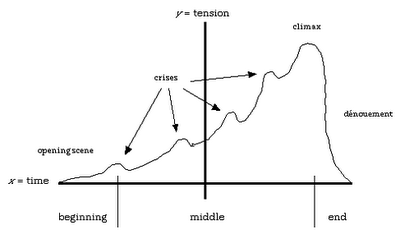
Look at topics discussed last year.
This one piece of quick research can give you insight as to the topics discussed before, letting you know exactly what level of knowledge and education you can expect from the audience.
This was one tip I wish I knew before speaking to a completely unfamiliar audience. I did all of the items above, but neglected to look at previous agendas. Then when I got to the conference, I looked at this year’s agenda and was shocked to see that the audience was may more familiar with the topic than i had been lead to believe.
Understanding your audience will shed light as to what content to cover, how to cover it and even which examples or jokes to use for your specific crowd.
Lastly, look at other details like time of day &Â size of the audience.
Will you be the first presenter of the day? Or maybe you’ll be closing out the entire conference.  Or maybe you’re right after lunch, which just so happens to be heavy coma-inducing food.  Use this knowledge and situation to determine the appropriate energy levels that will keep the attention of your audience, but not overwhelm them.
The size of the audience will dictate just how formal, informal or interactive your session can be. Larger groups usually benefit from a more formal presentation with rhetorical questions and slight interactivity. Whereas a smaller group begs more interaction which can be used to pull the audience in, ask them questions they can answer on the fly and even get them participating in the content.
Leave a Reply Cancel reply
Your email address will not be published. Required fields are marked *
7 Presentation Skills to Wow Your Audience

We’ve all been there, sitting in a presentation or speech, struggling to keep our eyes open as the presenter drones on. Maybe the content is interesting, but the delivery is lacklustre. Or maybe the delivery is fantastic, but the content is disorganised or hard to follow. Whatever the reason, there’s no denying that effective presentation skills are critical to captivating and inspiring your audience.
So, whether you’re a seasoned speaker or a novice presenter, it’s always a good idea to brush up on your skills. That’s why in this blog post, we’ll be covering seven effective presentation skills that are sure to wow your audience. From knowing your audience to engaging with them, these skills will help you deliver powerful presentations that leave a lasting impact.
So, let’s dive in and explore these seven effective presentation skills that will take your speaking abilities to the next level. And to help you hone these skills, we’d like to introduce you to our specialised effective presentation skills training programs.
Skill 1: Knowing Your Audience
One of the most effective presentation skills is knowing your audience. Understanding your audience helps you tailor your presentation to their needs, interests, and expectations.
Knowing your audience allows you to focus on the topics that are most relevant to them and speak in a language they can understand. Failure to know your audience can lead to a disengaged and uninterested audience, which can ultimately derail your presentation.
Tips for Identifying and Understanding Your Audience
When it comes to delivering a presentation, understanding your audience is essential. Identifying their needs, interests, and expectations can help you tailor your presentation to keep them engaged and interested throughout. Here are some tips to help you better identify and understand your audience:
1. Research your audience
Before your presentation, research your audience to understand their demographics, interests, and expectations. This can be done through social media, surveys, or by asking the event organisers for details about the attendees.
2. Ask questions
During your presentation, ask questions that engage the audience and help you understand their needs and interests. This can help you tailor your presentation to meet their expectations.
3. Analyse non-verbal cues
Pay attention to non-verbal cues, such as facial expressions and body language. This can help you gauge the audience's level of engagement and adjust your presentation accordingly.
4. Consider the occasion
The type of event can affect the expectations of your audience. If you're presenting at a formal event, your audience may expect a more polished and structured presentation. On the other hand, if you're presenting at a more casual event, your audience may appreciate a more relaxed and conversational tone.
5. Use social media
Social media can be a great tool for understanding your audience. Look for groups or hashtags related to your topic to see what people are saying about it. You can also use social media to ask questions and get feedback from your audience.
Skill 2: Storytelling
Storytelling is a powerful tool that can make your presentation stand out from the rest. It can help you engage your audience emotionally and make your message more memorable.
A well-crafted story can take your audience on a journey, creating a connection between you and them. In a world where attention spans are short, storytelling can be an effective way to hold the attention of your audience and keep them engaged.
Tips for crafting a compelling story for your presentation
Crafting a compelling story for your presentation takes some effort, but the result can be powerful. Here are some tips to help you create a story that resonates with your audience:
1. Start with a clear message
Before you begin crafting your story, identify the key message you want to convey. This will help you structure your story around the central idea and ensure that it aligns with your overall goal.

2. Use a simple structure
A simple structure can help you keep your story focused and easy to follow. Consider using a traditional story arc, which includes an introduction, rising action, climax, falling action, and resolution.
3. Create relatable characters
Characters are an important part of any story. Create characters that your audience can relate to, and make them feel human and believable. This will help your audience connect with your story on an emotional level.
4. Use sensory language
Sensory language can help bring your story to life. Use descriptive words to paint a picture in the minds of your audience. This can help them better understand and remember your story.
5. Incorporate humour
Humour can be an effective way to engage your audience and create a memorable presentation. However, be sure to use humour that is appropriate, relevant and not sexist, ageist or ableist.
Skill 3: Visual Aids
Visual aids can be a powerful tool to enhance your presentation and improve its effectiveness. They can help you convey complex information in an easy-to-understand way and make your presentation more engaging and memorable.
The human brain processes visual information much faster than text, so incorporating visual aids in your presentation can help your audience understand your message more quickly and effectively.
Tips for creating effective visual aids
Now that we've covered the importance of visual aids, here are some tips for effective presentation skills :
1. Keep it simple
Visual aids should be simple and easy to understand. Avoid cluttered or complicated images, and use clear and concise language. Your audience should be able to quickly and easily understand the information you are presenting.
2. Use high-quality images
Low-quality images can be distracting and detract from your message. Use high-quality images that are relevant to your message and enhance the overall tone of your presentation.
3. Avoid too much text
Visual aids should be used to support your message, not replace them. Avoid using too much text on your slides or graphs, and instead, use bullet points or brief phrases to convey your message.
4. Use colour strategically
Colour can be a powerful tool to help emphasise important information, but it should be used strategically. Avoid using too many colours or bright colours that can be distracting.
5. Incorporate multimedia
Videos and audio can be effective tools to help engage your audience and make your presentation more interactive. Just be sure to use multimedia that is relevant to your message and supports the overall tone of your presentation.
Skill 4: Body Language
Body language is a critical aspect of effective communication skills for presentation , especially in a presentation setting. The way you use your body can have a significant impact on how your message is received by your audience.
Your body language can convey confidence, interest, enthusiasm, and many other emotions and attitudes that can affect how your audience perceives you and your message.
Tips for using effective body language
Here are some tips for effective presentation skills :
1. Stand up straight
Good posture is key to projecting confidence and authority. Stand up straight with your shoulders back and your feet shoulder-width apart.
2. Make eye contact
Eye contact is a powerful way to connect with your audience and build trust. Try to make eye contact with different members of your audience throughout your presentation.
3. Use hand gestures
Appropriate hand gestures can help emphasise your message and make your presentation more engaging. However, be careful not to overdo it or use gestures that are distracting or inappropriate.
4. Avoid fidgeting
Fidgeting can be distracting and convey nervousness or anxiety. Try to stand still and avoid pacing, tapping your feet, or playing with objects.
5. Use facial expressions
Your facial expressions can convey a wide range of emotions and attitudes, from enthusiasm and interest to boredom and disengagement. Use appropriate facial expressions to match the tone of your message.
Skill 5: Voice and Tone
The way you use your voice can have a significant impact on how your presentation is perceived by your audience.
Your voice and tone can convey a range of emotions and attitudes, such as confidence, authority, enthusiasm, and interest. Your tone can also indicate the level of importance or urgency of your message.
Tips for using effective voice and tone
Now that we understand the impact that voice and tone can have on a presentation, let's explore some tips for effective presentation skills:
1. Practice speaking with intention
Before your presentation, take some time to practice your speaking with intention. Think about the key messages you want to convey and how you want your audience to feel while listening to your presentation. This will help you deliver your message with a clear and purposeful voice and tone.
2. Vary your pace
Varying your pace can help keep your audience engaged and interested in your presentation. Slow down during important or complex points, and speed up during lighter or more exciting parts. By varying your pace, you can also create a sense of urgency or importance in your message.
3. Use pitch to convey emotion
Varying the pitch of your voice can help convey different emotions and attitudes in your presentation. For example, a higher pitch can convey excitement, while a lower pitch can convey seriousness or importance.
4. Pay attention to your volume
Be sure to project your voice so that everyone in the room can hear you. However, be careful not to speak too loudly, which can be distracting or overwhelming for your audience.
5. Pause for emphasis
Pausing at strategic moments can help emphasise important points and give your audience time to process your message. Take a breath and pause before making an important point to give it more weight.
Skill 6: Engaging Your Audience
One of the most important aspects of giving a presentation is engaging your audience. Without audience engagement, your presentation can quickly become boring, forgettable, or even frustrating for your listeners. Engaging your audience is a crucial skill that can help you build rapport, gain trust, and effectively communicate your message through your communication skills for presentation .
Tips for engaging your audience throughout your presentation
Engaging your audience is a crucial skill that can help you build rapport, gain trust, and effectively communicate your message using your communication skills for presentation . In this section, we will explore some tips for effective presentation skills .
1. Use storytelling
Storytelling is a powerful tool that can help you capture your audience's attention and keep them engaged. Use personal stories, anecdotes, or case studies to illustrate your points and make your presentation more relatable.
Asking questions can help you create a dialogue with your audience and make them feel like they are part of the conversation. Use open-ended questions to encourage participation and discussion.
3. Use humour
Appropriate humour can help lighten the mood and create a sense of rapport with your audience. Use jokes, puns, or funny anecdotes to break up the monotony of your presentation and keep your audience engaged.
4. Use visual aids
Visual aids, such as graphs, charts, or videos, can help illustrate your points and make your presentation more dynamic. Use them strategically to support your message and keep your audience engaged.
5. Use audience participation
Incorporating interactive elements, such as polls, quizzes, or games, can help keep your audience engaged and create a sense of excitement or competition. Use them strategically to break up your presentation and keep your audience engaged.
Skill 7: Handling Questions and Feedback
Handling questions and feedback is a critical skill that can make or break a presentation. It provides an opportunity to demonstrate your knowledge, address any concerns, and show your audience that you value their input.
Tips for handling questions and feedback effectively
Handling questions and feedback can be daunting, but with some practice, it can become an opportunity to showcase your expertise and engage with your audience. Here are some tips on how to handle questions and feedback effectively:
1. Listen carefully
Listen carefully to the question or feedback, and take a moment to think about your response. This shows that you respect the person asking the question and value their input.
2. Repeat or rephrase the question
This ensures that you have understood the question correctly, and it also helps the audience hear the question clearly. Rephrasing the question can also help clarify any misunderstandings or confusion.
3. Be concise
Keep your answers concise and to the point. Avoid giving long-winded answers that might confuse or bore the audience.
4. Use real-life examples
Using examples or stories can help illustrate your points and make them more relatable to the audience. It can also help keep the audience engaged.
5. Be honest
If you don't know the answer to a question, it's okay to say so. You can offer to follow up with the person after the presentation or suggest resources where they can find more information.
Wrapping It Up
In conclusion, effective presentation skills are an essential part of being a successful communicator. Knowing your audience, storytelling, using visual aids, body language, voice, and tone, engaging your audience, and handling questions and feedback are all key skills that can help you deliver a powerful and impactful presentation.
By following the tips and strategies we've shared, you can improve your communication skills for presentation and leave a lasting impression on your audience. And if you're looking to take your skills to the next level, some.Education provides presentation skills training that can help you develop and hone these skills.
Remember, a great presentation isn't just about the content - it's also about the delivery. By mastering these skills, you can engage your audience, build your credibility, and leave a lasting impression. So go out there and wow your audience!
Useful Resources : 10 importance of speech communication | Communication skills presentation | Grapevine communication
Recent Blogs

What is Social Learning Theory? How to Adopt It in The Workplace
Explore the transformative power of social learning theory in the OB. If you're curious about what social learning theory is and how it can revolutionize your workplace,...

Why Are Employees Your Greatest Asset and How to Mentor Them
In the dynamic landscape of modern businesses, employees are the most valuable asset of any organisation. Their skills, knowledge, creativity, and dedication fuel an organisation's...

Dealing with difficult employees: An employer's guide
In any workplace, you're likely to encounter a variety of personalities and work styles. While most employees are cooperative and contribute positively to the team, there may be in...

How to stop being self-conscious: Strategies to feel more confident
In a world where self-confidence reigns supreme, it's all too easy to feel self-conscious. But what does it really mean to be self-conscious?And why does it have such a profound im...

How to prepare your team to handle negotiations?
In the dynamic business world, the ability to negotiate effectively and deliver persuasive pitches can be the key differentiator between triumph and failure. Whether you're seeking...

Effective Communication skills can improve your self-confidence and boost career growth
In today's fast-paced and competitive professional world, self-confidence is a valuable asset that can significantly impact your career growth and success. Whether you're seeking a...

Difference between KRA and KPI
In the realm of performance management and goal setting, the terms KRA (Key Result Area) and KPI (Key Performance Indicator) are frequently used, but they serve distinct purposes i...

What is the difference between a boss and a leader?
In the world of management and leadership, the terms "boss" and "leader" are often used interchangeably. However, they represent distinct approaches to managing and inspiring a tea...

How to interview for a job when you have no work experience?
Landing your first job can be both exciting and nerve-wracking, especially when you lack work experience. However, with the right approach and preparation, you can ace your job int...

9 steps for improving collaboration between teams
In today's rapidly evolving workplace, effective team collaboration is more critical than ever. Whether you're in a traditional office, a remote team, or a hybrid work environment,...

How being intentional can advance your career?
In a world filled with constant distractions and fast-paced living, the concept of being intentional stands out as a beacon of purpose and direction. But what does it mean to...

How to improve your problem solving skills?
Problem solving is a critical skill that permeates various aspects of life, from personal challenges to professional endeavors. The ability to tackle issues, make decisions, and fi...

Complete Guide to Debating: Improve your Debating Skills
In the world of communication and persuasion, mastering the art of debate is a skill that can truly set you apart. Whether you're a student, a professional, or simply someone who w...

Experimentation brings innovation: An experimental workplace
Experimentation is the lifeblood of innovation, breathing new life into stagnant routines and sparking transformative ideas. Organisations that embrace a culture of experimentation...

How to Build a Healthy Workplace Environment?
In today's highly competitive work landscape, the importance of cultivating a healthy workplace environment cannot be overstated. A positive work environment not only contributes t...

How Would You Define Success?
Success, a word that carries different meanings for different individuals, is a universal aspiration.The concept of what is success in life has captivated minds for centuries, fuel...

Why is Networking Important
The importance of networking has never been more evident. Whether you're a seasoned professional or just starting out, building and nurturing a strong professional network can be t...

Guide to Choosing a Successful Speech Topic
Effective communication skills have become more crucial in today's rapidly changing world. Whether you're a student, a professional, or someone simply looking to enhance your publi...

The Importance of Storytelling in Business, with Examples
In the dynamic world of business, where information is abundant, and attention spans are fleeting, storytelling has emerged as a powerful tool that captivates audiences and leaves...

10 Best Practices for Giving a Remote Presentation
After COVID, with more companies embracing the WFH hybrid model of working, virtual presentations have become a fundamental part of professional communication. Whether you're an ex...
Your success. Powered by the Six Cs.
Knowledge centre.
Copyright © School Of Meaningful Experiences private limited, Privacy Policy, Cookie Policy and Terms of Use | Sitemap
Chat with us now
Your account has been created.
Join our team
Interact with our admission team, download brochure.
OTP has been sent, Please check your E-mail
Resend OTP in:
Verify Your Details

Your Organizing Business
Where professional organizers learn and connect
Facebook Twitter Linkedin Pinterest Instagram
This page may contain links to Amazon.com or other sites from which I may receive commission on purchases you make after clicking on such links. Read my full Disclosure Policy
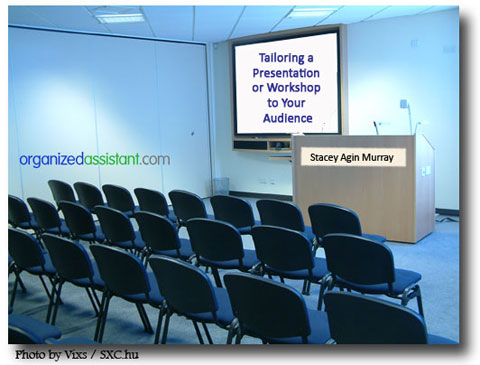
Public speaking is an important skill to acquire , as it can be a very effective tool for marketing your organizing business . Stacey Agin Murray of Organized Artistry has spoken to a variety of different groups, so I’ve asked her to share her secrets for ensuring that it’s a valuable experience for both you and your audience.

There are hundreds of ways to promote one’s business. If you don’t mind standing in front of people and talking, then public speaking can be one of your secret marketing weapons!
There are many topics a Professional Organizer can speak about–the list is long and varied. But, before creating a presentation, it’s necessary to know your audience so you can tailor your presentation or workshop to their needs. You wouldn’t want to prepare a workshop on organizing kids’ clothes for a group of retirees! You want to know who will be sitting in the audience so you can create an optimal learning experience for them. If they’ve enjoyed and learned from your presentation, they are more likely to purchase your goods and engage your services.
How can you tailor your presentation to your audience?
The first step is to reach out to your contact person–the person who hired you to do the presentation/workshop. They will have the most knowledge regarding the demographics of the audience. If they don’t know offhand, ask them to do some ‘digging’ to find out more about who the audience is and what they would like to learn.
Once you get that information, it’s time to ask yourself the following ‘5 W’s questions’ to achieve audience clarity and help you to tailor your presentation.
Who will be attending? What is the age, culture, place they are in life, financial status, of the audience?
What do they want to learn?
What are they expected to learn? (for a school or corporation)
When is the presentation taking place? Do I have 15 minutes or an hour to speak? Lunch-n-learn or evening program?
Where will I be doing the presentation? Is there wi-fi or should I bring a an easel and some visual aids?
Why have I been chosen to give a presentation or workshop to this particular audience?
After you’ve determined the answers to the ‘5 W’s questions,’ your job is to figure out the ‘How.’ How will I tailor my presentation to meet the needs of my audience based on the knowledge I’ve gathered? Below are three categories to concentrate on while tailoring a presentation for a particular audience.
Delivery Style
Think about the group you’ll be presenting to. How would they want to you to deliver your information to them?
- Stress applicable information to a particular group to increase relevancy.
- Use relaxed or formal language?
- Infuse a little or a lot of humor to connect with your audience? Or none at all…
- Should you dress formally or more casually?
- Use Power Point or physical props or a combination of both?
- If using slides, then slides with text or just visuals?
- Speak from a lectern?
- Sit in a circle with a small, informal group?
- Mingle with the audience before and/or after the presentation?
Tailoring your presentation to your audience is key to engaging them and ensuring they leave with the knowledge they came for. Arrive early, be prepared, and smile–you can’t go wrong if you’re showing enthusiasm!
I recommend...

Stacey Agin Murray
Join the conversation, leave a comment cancel reply.
This site uses Akismet to reduce spam. Learn how your comment data is processed .
Related Posts
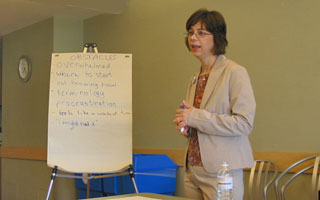
Public Speaking as a Management Skill

Get Out There and Speak!

POC 2013 Conference Perspective – from the stage and the seat

How to create a buzz for your brand with free workshops
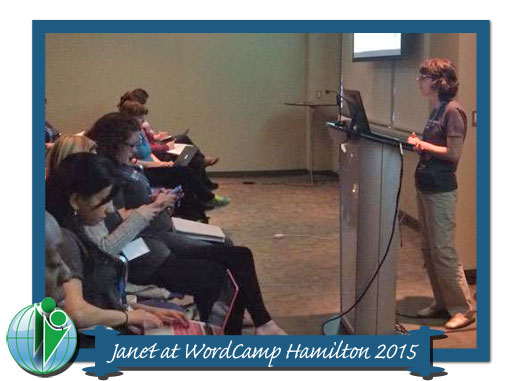
Why are presentation skills so important for success?

An official website of the United States government
Here's how you know
The .gov means it's official. Federal government websites often end in .gov or .mil. Before sharing sensitive information, make sure you’re on a federal government site.
The site is secure. The https:// ensures that you are connecting to the official website and that any information you provide is encrypted and transmitted securely.
What the New Overtime Rule Means for Workers

One of the basic principles of the American workplace is that a hard day’s work deserves a fair day’s pay. Simply put, every worker’s time has value. A cornerstone of that promise is the Fair Labor Standards Act ’s (FLSA) requirement that when most workers work more than 40 hours in a week, they get paid more. The Department of Labor ’s new overtime regulation is restoring and extending this promise for millions more lower-paid salaried workers in the U.S.
Overtime protections have been a critical part of the FLSA since 1938 and were established to protect workers from exploitation and to benefit workers, their families and our communities. Strong overtime protections help build America’s middle class and ensure that workers are not overworked and underpaid.
Some workers are specifically exempt from the FLSA’s minimum wage and overtime protections, including bona fide executive, administrative or professional employees. This exemption, typically referred to as the “EAP” exemption, applies when:
1. An employee is paid a salary,
2. The salary is not less than a minimum salary threshold amount, and
3. The employee primarily performs executive, administrative or professional duties.
While the department increased the minimum salary required for the EAP exemption from overtime pay every 5 to 9 years between 1938 and 1975, long periods between increases to the salary requirement after 1975 have caused an erosion of the real value of the salary threshold, lessening its effectiveness in helping to identify exempt EAP employees.
The department’s new overtime rule was developed based on almost 30 listening sessions across the country and the final rule was issued after reviewing over 33,000 written comments. We heard from a wide variety of members of the public who shared valuable insights to help us develop this Administration’s overtime rule, including from workers who told us: “I would love the opportunity to...be compensated for time worked beyond 40 hours, or alternately be given a raise,” and “I make around $40,000 a year and most week[s] work well over 40 hours (likely in the 45-50 range). This rule change would benefit me greatly and ensure that my time is paid for!” and “Please, I would love to be paid for the extra hours I work!”
The department’s final rule, which will go into effect on July 1, 2024, will increase the standard salary level that helps define and delimit which salaried workers are entitled to overtime pay protections under the FLSA.
Starting July 1, most salaried workers who earn less than $844 per week will become eligible for overtime pay under the final rule. And on Jan. 1, 2025, most salaried workers who make less than $1,128 per week will become eligible for overtime pay. As these changes occur, job duties will continue to determine overtime exemption status for most salaried employees.

The rule will also increase the total annual compensation requirement for highly compensated employees (who are not entitled to overtime pay under the FLSA if certain requirements are met) from $107,432 per year to $132,964 per year on July 1, 2024, and then set it equal to $151,164 per year on Jan. 1, 2025.
Starting July 1, 2027, these earnings thresholds will be updated every three years so they keep pace with changes in worker salaries, ensuring that employers can adapt more easily because they’ll know when salary updates will happen and how they’ll be calculated.
The final rule will restore and extend the right to overtime pay to many salaried workers, including workers who historically were entitled to overtime pay under the FLSA because of their lower pay or the type of work they performed.
We urge workers and employers to visit our website to learn more about the final rule.
Jessica Looman is the administrator for the U.S. Department of Labor’s Wage and Hour Division. Follow the Wage and Hour Division on Twitter at @WHD_DOL and LinkedIn . Editor's note: This blog was edited to correct a typo (changing "administrator" to "administrative.")
- Wage and Hour Division (WHD)
- Fair Labor Standards Act
- overtime rule
SHARE THIS:


IMAGES
VIDEO
COMMENTS
When preparing a presentation, we all remember to think about the basics: what you want to say, the data you need to back it up, any visuals that might help.
Powered by AI and the LinkedIn community. 1. Know your audience. 2. Define your purpose. Be the first to add your personal experience. 3. Adapt your content. Be the first to add your personal ...
They laugh inside, react less and are generally quieter, so it is imperative to get them to engage and have more one-on-one conversations. The opposite is true of big crowds. -- Dalia MacPhee ...
Tailoring a speech to one's audience is the best way to get them to be invested in what you're saying. Watch out, though! If you tailor your speech too much to one segment of the audience, you risk losing the rest. If you speak just to the experts, your material could sail over the heads of beginners. If you speak only to those who agree ...
5 Solicit feedback. One of the best ways to tailor your pitch and presentation for different settings is to solicit feedback from your audience, your peers, or your mentors. Feedback can help you ...
5) Make sure your presentation is visual, smart, and appealing. From the times of Aristotle, all persuasive communication has aimed to speak to the mind and to the heart. A good presentation has the facts delivered to the audience that touches an emotional aspect or aims to bring out an emotional reaction.
Tailor your presentation to meet their needs and expectations, and you'll have them hooked from the start! 2. Conduct thorough research on the topic. Time to hit the books (or the internet)! Don't skimp on the research with your presentation materials — dive deep into the subject matter and gather valuable insights. The more you know, the ...
Take your scheduled time into account, revving the enthusiasm up or down as necessary to best engage your audience's attention. If you're the luncheon speaker, you may want to use a high-energy, high-humor approach to counter the heavy meal. If it's been a long day, you may want to use a straight-to-the-point approach.
Here are a few tips for business professionals who want to move from being good speakers to great ones: be concise (the fewer words, the better); never use bullet points (photos and images paired ...
6. Harness the Power of Visuals and Graphics. Visuals add meaning to your slides and make them stand apart. Using the right visuals and graphics is extremely vital to meet the expectations of your audience. For instance, you can use delightful illustrations and colorful charts for a group of elementary students.
Tailor Your Presentation to Your Audience. 4 min Every presentation you give is for a specific audience — your manager, your team, the whole company, a customer, etc. To make your presentation as effective as it can possibly be, you need to tailor it to that audience. Before you start creating your presentation, understand your audience. ...
5 Get feedback. One of the best ways to tailor your presentation to your audience's preferences is to get feedback from them. You can ask for feedback before, during, or after your presentation ...
Look at some of the news around the companies attending. This can let you see if there is some major breaking news in the industry or anything worthy of mentioning. This small detail can go a long way in demonstrating to your audience that you do, in fact, care about them. Do the research to understand who you'll be speaking to.
Presentation skills are the abilities and qualities necessary for creating and delivering a compelling presentation that effectively communicates information and ideas. They encompass what you say, how you structure it, and the materials you include to support what you say, such as slides, videos, or images. You'll make presentations at various ...
Knowing your audience. You probably wouldn't speak to your lecturer the same way you speak to your friends. Delivering a presentation is the same; you need to tailor the tone, style and content ...
2. Ask questions. During your presentation, ask questions that engage the audience and help you understand their needs and interests. This can help you tailor your presentation to meet their expectations. 3. Analyse non-verbal cues. Pay attention to non-verbal cues, such as facial expressions and body language.
1. Know your audience. Be the first to add your personal experience. 2. Define your purpose. 3. Structure your presentation. 4. Adapt your style.
The topic of your presentation can impact what you wear and you should tailor your outfit to go along with your topic. What you decide to wear has a lot to do with your audience, industry, and topic. For example technology and creative industries typically hire young professionals in their 20’s and 30’s who can get away with dark ...
The first step is to reach out to your contact person-the person who hired you to do the presentation/workshop. They will have the most knowledge regarding the demographics of the audience. If they don't know offhand, ask them to do some 'digging' to find out more about who the audience is and what they would like to learn.
Before you present, make sure you know your content thoroughly, but don't memorize your script. Leave a little wiggle room so you can tailor the content on the fly. This strategy requires you to be more spontaneous, but it will make your presentation seem more natural and the audience will find it more relatable.
It is really important to learn to investigate your audience before the meeting. 2. Focus on your opening. Your audience will make two decisions in the first few seconds of your presentation. Will ...
[Verse 2: Snoop Dogg (AI)] Nephew, what the fuck you really 'bout to do? We passed you the torch at the House of Blues And now you gotta do some dirty work, you know how to move, right? Right? I ...
[Chorus] All that time you were throwin' punches, I was buildin' somethin' And I couldn't wait to show you it was real Screamed, "Fuck you, Aimee" to the night sky as the blood was gushin' But I ...
Choose your words. 3. Adjust your tone. 4. Vary your complexity. Be the first to add your personal experience. 5. Monitor your feedback. Be the first to add your personal experience.
The Department of Labor's new overtime regulation is restoring and extending this promise for millions more lower-paid salaried workers in the U.S.